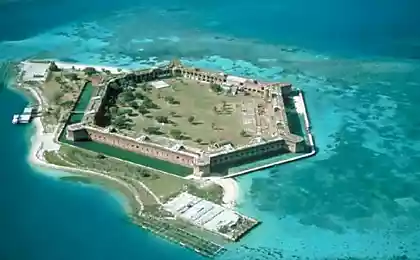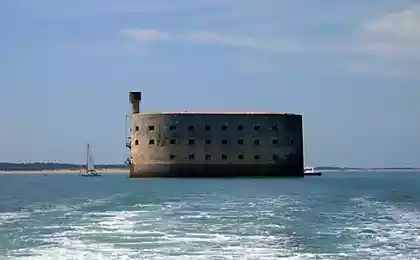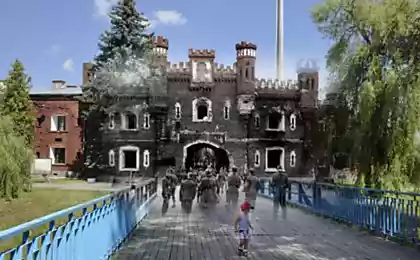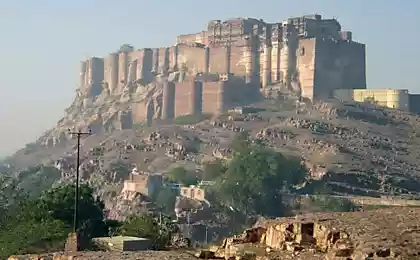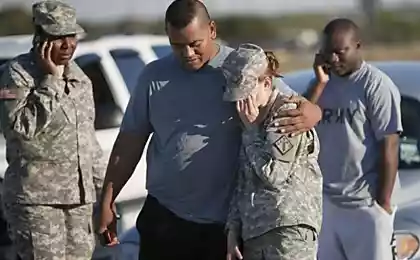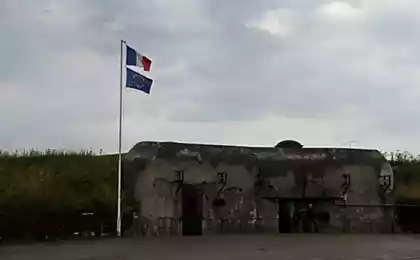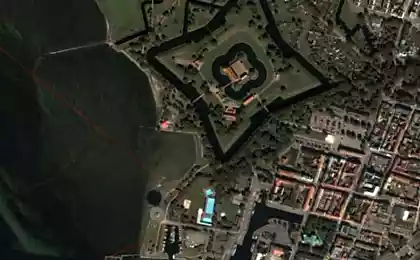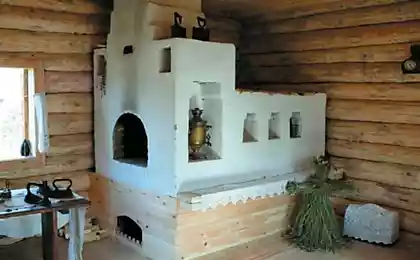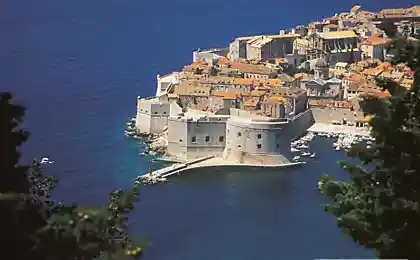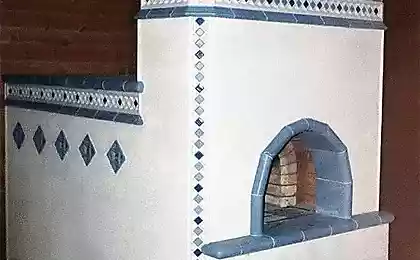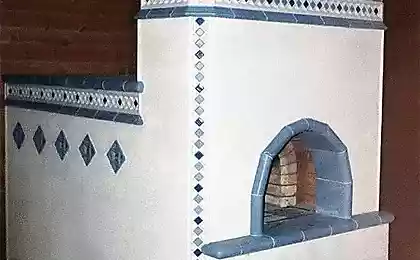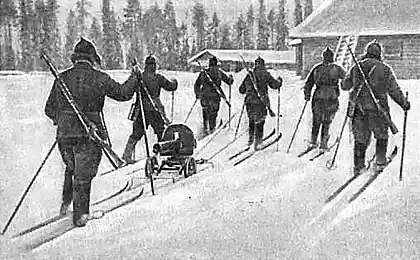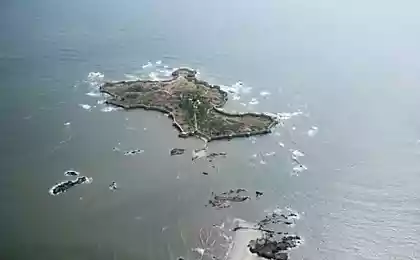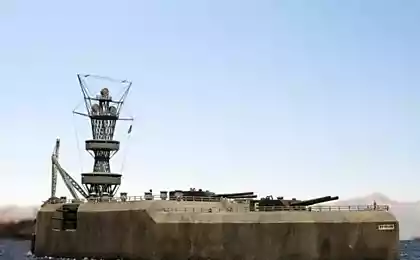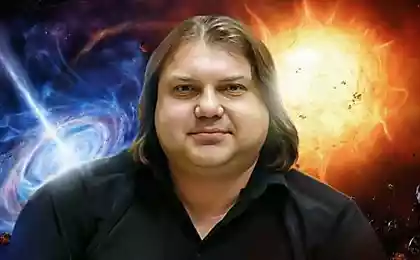840
Fort Ross: Russian fort in California
In San Francisco, the sun was shining, and here, on the shores of the Pacific Ocean, was pouring rain and the wind blew across the sky gray damp cloth, from which river water flowed. We came here on a wonderful road that wound through the first fairy forest of tall trees, and then suddenly turned into serpentine. The road ran along the shore. Below the cliff, rolled the giant ocean waves, inaudible in the car and almost invisible because of the fog. In a small guard booth was empty. We put ten dollars in a wooden box, cut off from the roll tickets and went to the parking lot.
We at Fort Ross, a former Russian settlement in northern California. The location, about which I've heard, read and dreamed of someday be here. In the spring of 1812, Lieutenant Ivan Kuskov landed in this place a hundred Russian and Aleut hunters - by this time the local land has already been bought by Russian local Indians kasaya-Pomo three blankets, three pairs of pants, two axes, three hoes and several strings of beads. New Russian colony was needed to supply with food Russian settlements in Alaska and the Aleutian Islands. Pieces of associates began to build a fortress in the style of the traditional strongholds of Siberia and Alaska - Palisade, corner towers, warehouses and timber houses. The Aleuts have built their houses on the outside of the main gate, right on the ocean. They were skilled hunters of fur seal, along with them there came forty kayaks to hunt the beast.
28 ph © drugoi
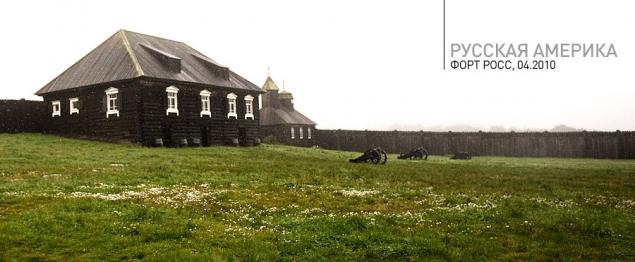
So Fort Ross looked around 1840. Russian had to build relationships with the local people - the Indians and the Spaniards, who saw all the coast of the Pacific Ocean its territory. I must say that was an excellent Russian diplomats - with the Indians, unlike the Spaniards, they believe relations are carefully trying to be friends with them, and Benjamin's father, John baptized in the Orthodox faith only those natives who wanted it.
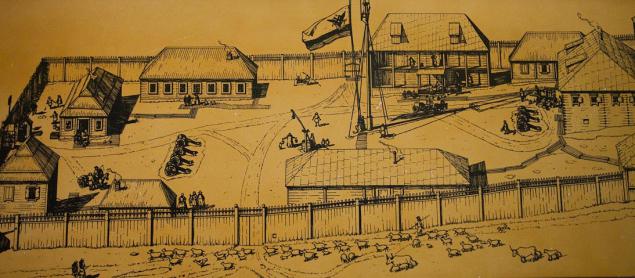
Moreover, Russian leaders have awarded local Indian tribes sui medals "The Union of Russia", as it took the Indians under his protection.

(These photos were taken at the Museum of Fort Ross)
Russian American company skilfully got down to business and economy of the Russian colony grew stronger from year to year. It was built the first windmill in California, shipyard, the first orchard and vineyard. Russian successfully raised cattle, wool sent for export, making furniture, doors, frames, tiles of redwoods, carts, wheels, barrels, carts, curry, processed iron and copper.

So clever was invented loading timber ships.
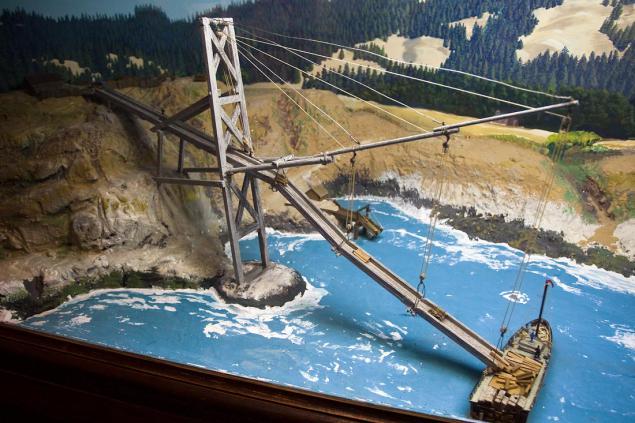
From the time there is little that is left, and every real testimony is of particular value. Here are the keys to the main gate and the church carefully preserved an American family who lived here much later, when Russian colonists in the fort no longer exists.

The museum of the fort kept clothes and household items colonists.
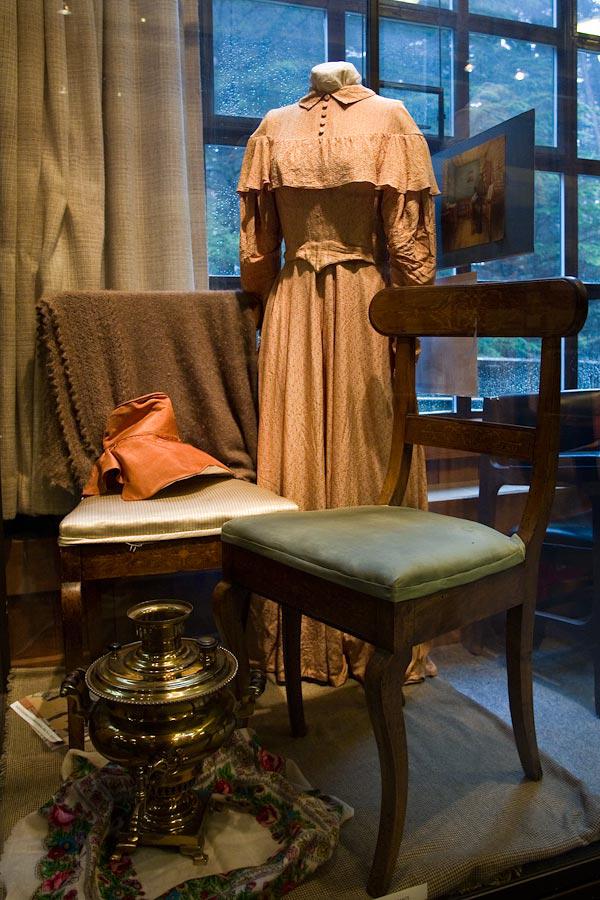
We left the museum, the path led through the woods to the field, behind which could be seen a dark wooden wall - the wall of the fortress on the Russian Pacific coast.
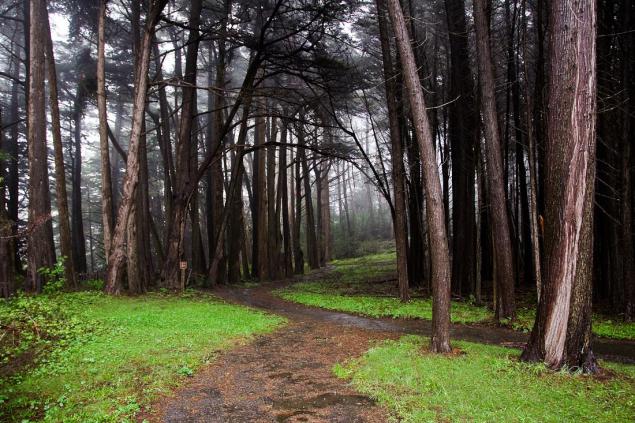
We are inside the fortress. All this, of course, is the reconstruction - the original fort was left was only the last house of the commandant of the fortress - Alexander Gavrilovic Rotchev - the reduction of the remaining houses used building material.
On the left in the picture - the very Kuskova house, which I wrote at the beginning. Reconstruction completed in 1983
Right - the first outside of Alaska Russian Chapel in America, built in the 1820s. It was built at a time when the fort was not a priest. Father John began to hold religious ceremonies here only in 1836. The first chapel was destroyed during a catastrophic earthquake in 1906, it was restored ten years. In 1970 the chapel burned down, the Americans built it again, in the Russian tradition, laying the building survived the fire logs.
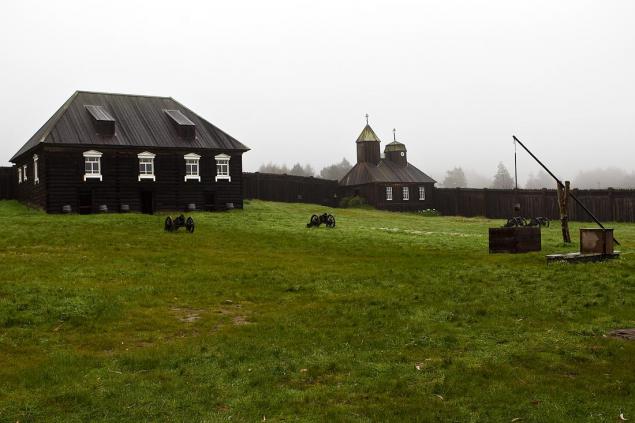
10

Despite the fact that the fortress near the brook, inside the fortress was dug a well in the event of enemy attack. After the death of Governor Jose Joaquim de Arrilagi, which is very good to Russian settlers, the Spaniards took a tough stance, demanding to remove the colony from California land. Before the armed clashes never came, but the government in Madrid was ordered to ban trade with the Russian. Locals do not really listen to the Madrid authorities - it was interesting to exchange food products to Russian craftsmen who worked at the fort. In 1821, Mexico was separated from Spain and trade began to develop actively - Russian began supplying Mexicans weapons.
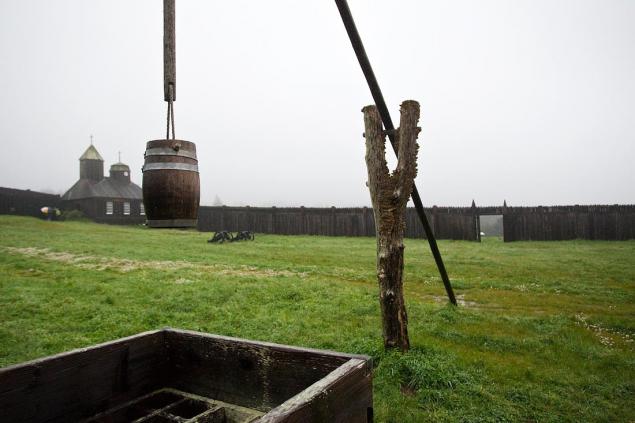
In the house of the founder of Fort Ross Ivan Aleksandrovich Kuskova it looks as if the owners come here for a moment and was about to return.
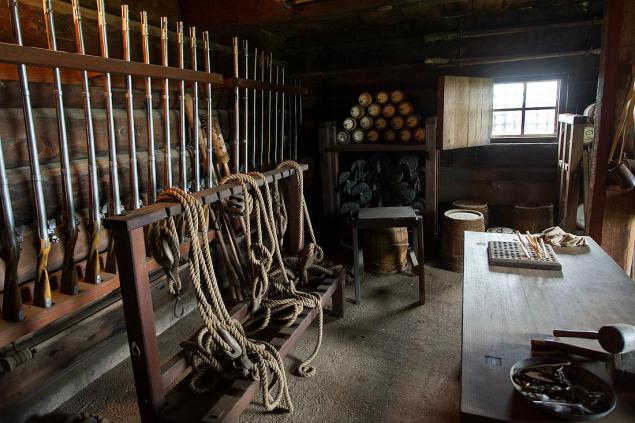
13
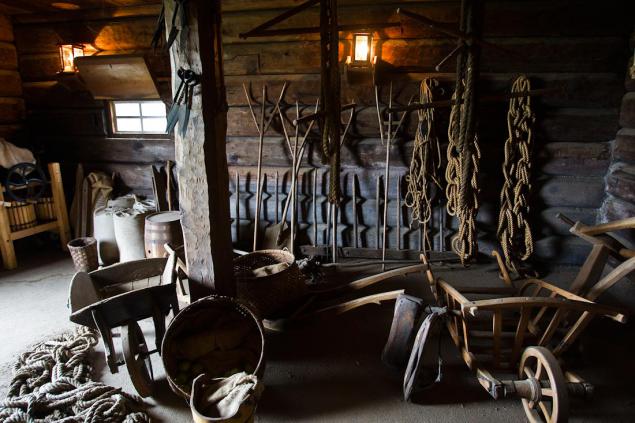
14
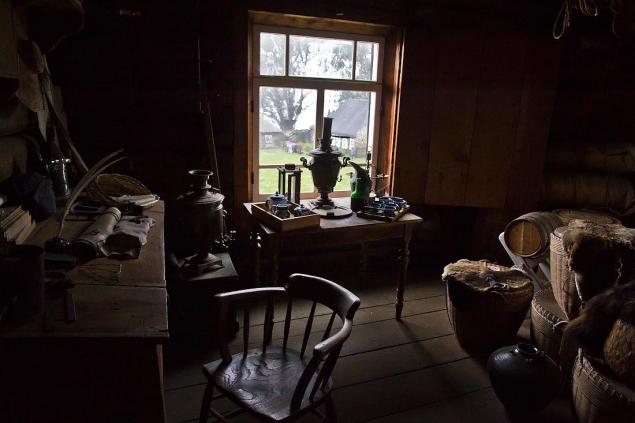
15
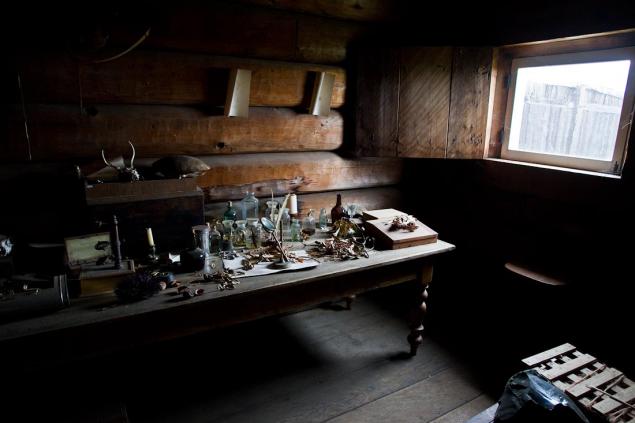
The fire of 1970 was so strong that the bell, donated the fort Russian merchant melted. Because of its metal in Belgium have cast a replica of which hangs at the entrance to the chapel.
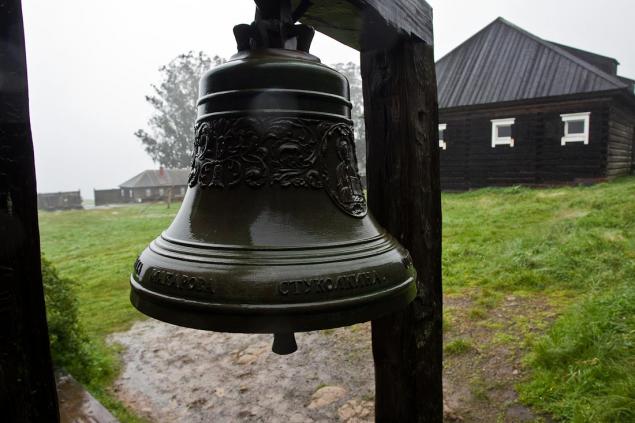
However, the most interesting thing happening on the other side of the fort:
Under pouring rain at the flagpole together students from San Francisco. On this day, they ended a two-day role-playing game at Fort Ross. Every two weeks, here come the boys from different schools to live here the life of Russian colonists to try yourself in a new way. They take themselves Russian names are Russian clothing (such what they imagined it, of course), they sing Russian songs, cook over a campfire. This is one part of the great work being done by The Fort Ross Interpretive Association - Society for the preservation of Fort Ross. All of it looked that day incredibly touching - soaking wet from the rain, shivering American kids shouted "Glory to Russia!", When curator Hank Birnbaum took his school flag and folded it neatly.
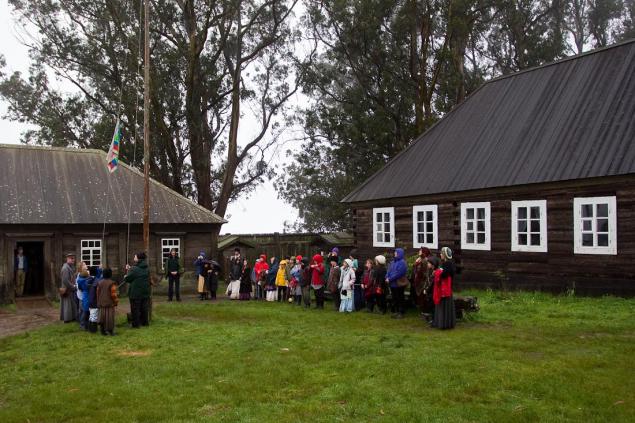
18
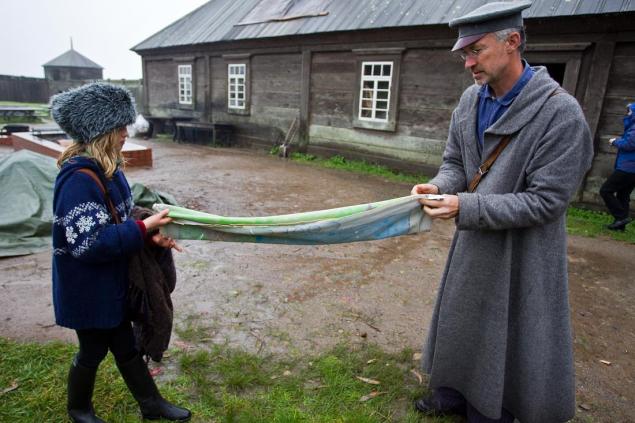
Hank, an awful lot like Apple founder Steve Jobs, said feelingly speech, praised the "colonists" for courage and heroism (they are here, such as firing a gun), patience and love of history.
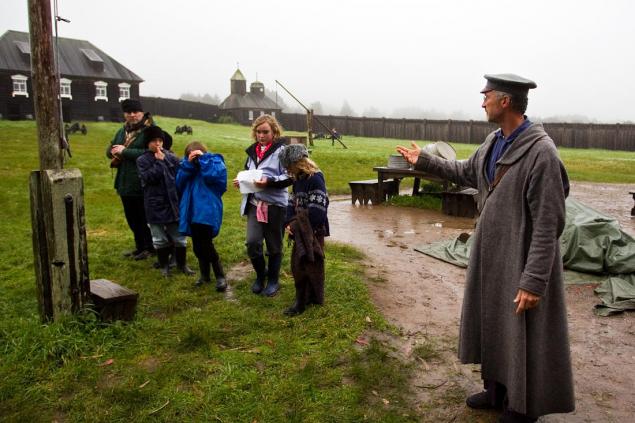
20
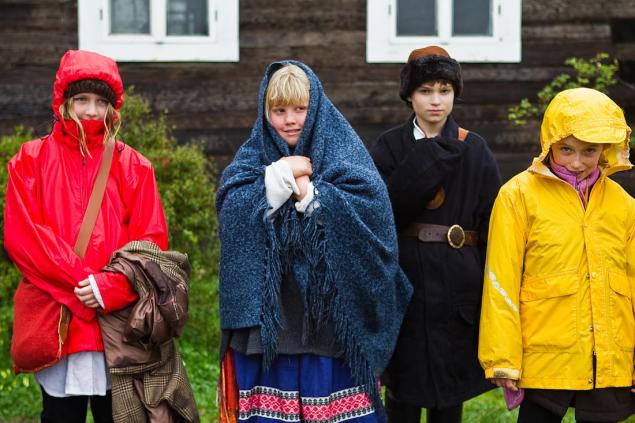
21

22
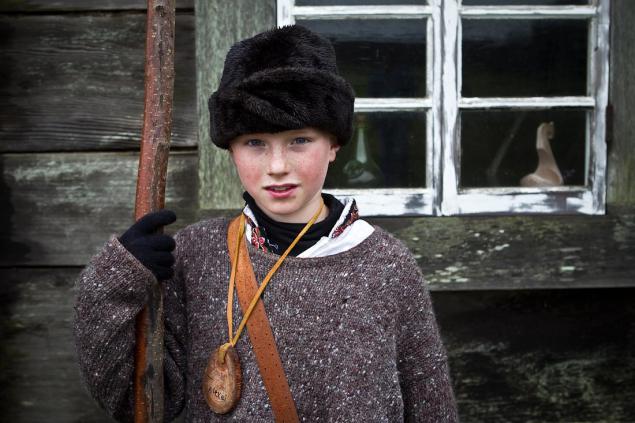
The outer side of the fortress - the wall and the chapel of her. On the right a few meters noise ocean surf.

Sandy Beach Cove - there was a fortified harbor, is bubbling with life. The main port of the Russian colony was located 19 miles away in the Gulf of Rumyantsev.
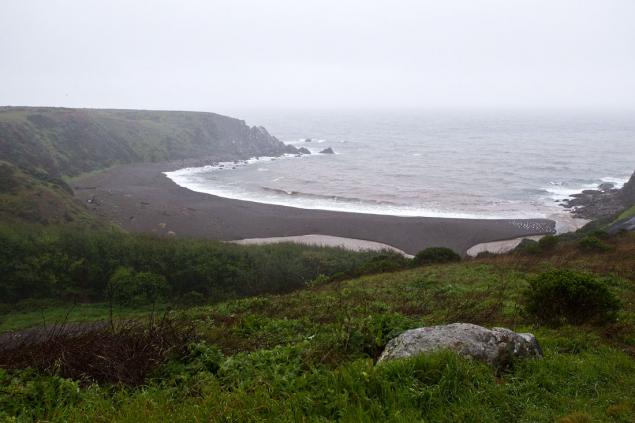
View Rotchev house and business premises of the fort.
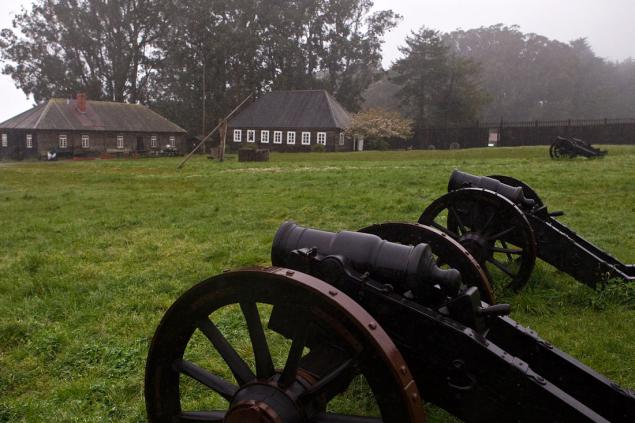
On the way back we stopped at a place where you can go to the Russian cemetery. There are those who built Fort Ross, who lived and worked here. This shows the strength and the ocean.
By the way, the founder of the fort I.A.Kuskov who returned later in Russia, buried in the territory Tot'ma Sumorin the Saviour Monastery.
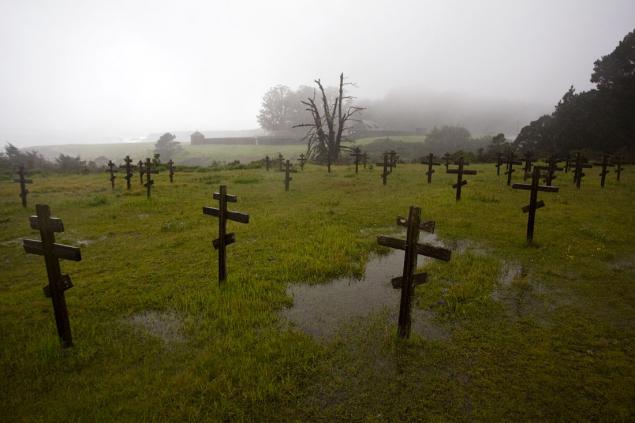
We waited until Hank spends the guys and talked with him about his life and work here. It turns out that Hank Birnbaum few years we have lived in Lake Baikal and brought back Russian beautiful wife. Surprisingly bright and intelligent man who loves his job and knows almost everything about the fort. At Fort Ross Historic Park financial problems - from the state of California are sorely lacking money for the maintenance of the fortress, the budget gutted and everything is kept on private donations. Hank, however, did not lose heart and are preparing for the anniversary - in 2012 the fort 200 years old.
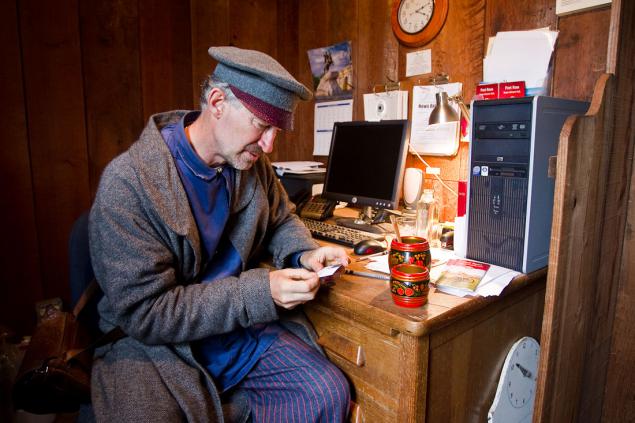
That's what I photographed him at parting. Thank you, Hank
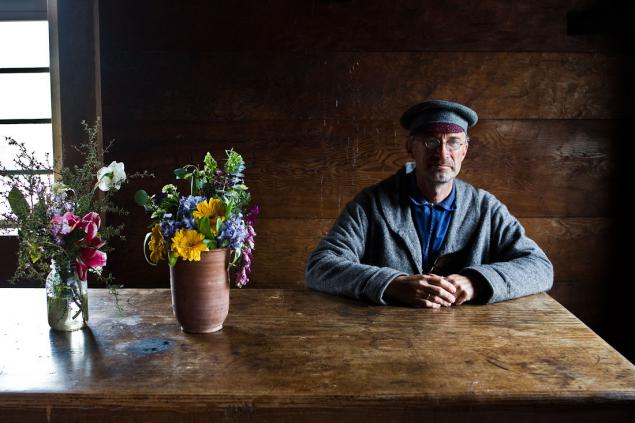
Source:
We at Fort Ross, a former Russian settlement in northern California. The location, about which I've heard, read and dreamed of someday be here. In the spring of 1812, Lieutenant Ivan Kuskov landed in this place a hundred Russian and Aleut hunters - by this time the local land has already been bought by Russian local Indians kasaya-Pomo three blankets, three pairs of pants, two axes, three hoes and several strings of beads. New Russian colony was needed to supply with food Russian settlements in Alaska and the Aleutian Islands. Pieces of associates began to build a fortress in the style of the traditional strongholds of Siberia and Alaska - Palisade, corner towers, warehouses and timber houses. The Aleuts have built their houses on the outside of the main gate, right on the ocean. They were skilled hunters of fur seal, along with them there came forty kayaks to hunt the beast.
28 ph © drugoi

So Fort Ross looked around 1840. Russian had to build relationships with the local people - the Indians and the Spaniards, who saw all the coast of the Pacific Ocean its territory. I must say that was an excellent Russian diplomats - with the Indians, unlike the Spaniards, they believe relations are carefully trying to be friends with them, and Benjamin's father, John baptized in the Orthodox faith only those natives who wanted it.

Moreover, Russian leaders have awarded local Indian tribes sui medals "The Union of Russia", as it took the Indians under his protection.

(These photos were taken at the Museum of Fort Ross)
Russian American company skilfully got down to business and economy of the Russian colony grew stronger from year to year. It was built the first windmill in California, shipyard, the first orchard and vineyard. Russian successfully raised cattle, wool sent for export, making furniture, doors, frames, tiles of redwoods, carts, wheels, barrels, carts, curry, processed iron and copper.

So clever was invented loading timber ships.

From the time there is little that is left, and every real testimony is of particular value. Here are the keys to the main gate and the church carefully preserved an American family who lived here much later, when Russian colonists in the fort no longer exists.

The museum of the fort kept clothes and household items colonists.

We left the museum, the path led through the woods to the field, behind which could be seen a dark wooden wall - the wall of the fortress on the Russian Pacific coast.

We are inside the fortress. All this, of course, is the reconstruction - the original fort was left was only the last house of the commandant of the fortress - Alexander Gavrilovic Rotchev - the reduction of the remaining houses used building material.
On the left in the picture - the very Kuskova house, which I wrote at the beginning. Reconstruction completed in 1983
Right - the first outside of Alaska Russian Chapel in America, built in the 1820s. It was built at a time when the fort was not a priest. Father John began to hold religious ceremonies here only in 1836. The first chapel was destroyed during a catastrophic earthquake in 1906, it was restored ten years. In 1970 the chapel burned down, the Americans built it again, in the Russian tradition, laying the building survived the fire logs.

10

Despite the fact that the fortress near the brook, inside the fortress was dug a well in the event of enemy attack. After the death of Governor Jose Joaquim de Arrilagi, which is very good to Russian settlers, the Spaniards took a tough stance, demanding to remove the colony from California land. Before the armed clashes never came, but the government in Madrid was ordered to ban trade with the Russian. Locals do not really listen to the Madrid authorities - it was interesting to exchange food products to Russian craftsmen who worked at the fort. In 1821, Mexico was separated from Spain and trade began to develop actively - Russian began supplying Mexicans weapons.

In the house of the founder of Fort Ross Ivan Aleksandrovich Kuskova it looks as if the owners come here for a moment and was about to return.

13

14

15

The fire of 1970 was so strong that the bell, donated the fort Russian merchant melted. Because of its metal in Belgium have cast a replica of which hangs at the entrance to the chapel.

However, the most interesting thing happening on the other side of the fort:
Under pouring rain at the flagpole together students from San Francisco. On this day, they ended a two-day role-playing game at Fort Ross. Every two weeks, here come the boys from different schools to live here the life of Russian colonists to try yourself in a new way. They take themselves Russian names are Russian clothing (such what they imagined it, of course), they sing Russian songs, cook over a campfire. This is one part of the great work being done by The Fort Ross Interpretive Association - Society for the preservation of Fort Ross. All of it looked that day incredibly touching - soaking wet from the rain, shivering American kids shouted "Glory to Russia!", When curator Hank Birnbaum took his school flag and folded it neatly.

18

Hank, an awful lot like Apple founder Steve Jobs, said feelingly speech, praised the "colonists" for courage and heroism (they are here, such as firing a gun), patience and love of history.

20

21

22

The outer side of the fortress - the wall and the chapel of her. On the right a few meters noise ocean surf.

Sandy Beach Cove - there was a fortified harbor, is bubbling with life. The main port of the Russian colony was located 19 miles away in the Gulf of Rumyantsev.

View Rotchev house and business premises of the fort.

On the way back we stopped at a place where you can go to the Russian cemetery. There are those who built Fort Ross, who lived and worked here. This shows the strength and the ocean.
By the way, the founder of the fort I.A.Kuskov who returned later in Russia, buried in the territory Tot'ma Sumorin the Saviour Monastery.

We waited until Hank spends the guys and talked with him about his life and work here. It turns out that Hank Birnbaum few years we have lived in Lake Baikal and brought back Russian beautiful wife. Surprisingly bright and intelligent man who loves his job and knows almost everything about the fort. At Fort Ross Historic Park financial problems - from the state of California are sorely lacking money for the maintenance of the fortress, the budget gutted and everything is kept on private donations. Hank, however, did not lose heart and are preparing for the anniversary - in 2012 the fort 200 years old.

That's what I photographed him at parting. Thank you, Hank

Source:


